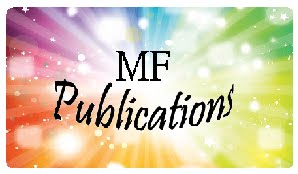During the month of Ramadan,
Muslims observe a strict fast and participate in pious activities such
as charitable giving and peace-making. It is a time of intense spiritual
renewal for those who observe it. At the end of Ramadan, Muslims
throughout the world observe a joyous three-day celebration called Eid al-Fitr (the Festival of Fast-Breaking). It is a time to give in charity to those in need, and celebrate with
family and friends the completion of a month of blessings and joy.
Typically, Muslims wake up early in the morning—always before
sunrise— offer Salatul Fajr (the pre-sunrise prayer). Muslims recite the following incantation in a low voice while going to the Eid prayer: Allāhu Akbar, Allāhu Akbar, Allāhu Akbar. Lā ilāha illà l-Lāh wal-Lāhu akbar, Allahu akbar walil-Lāhi l-ḥamd. Recitation ceases once the Imam commences activities.
On the day of Eid, Muslims gather early in the morning in outdoor
locations or mosques to perform the Eid prayer. This consists of a
sermon followed by a short congregational prayer. Eid al-Fitr has a particular salat (Islamic prayer) consisting of two raka'ah (units) and generally offered in an open field or large hall. It may only be performed in congregation. Muslims are recommended to use separate routes to and from the prayer grounds.
After the Eid prayer, Muslims usually scatter to visit various family and friends, give gifts (especially to children). These activities traditionally continue for three days. In most Muslim
countries, the entire 3-day period is an official government/school
holiday.
It is forbidden to fast on the Day of Eid. It is customary to acknowledge this with a small sweet breakfast, preferably of the date fruit, before attending a special Eid prayer.
Although the date of Eid ul-Fitr is always the same in the Islamic
calendar, the date in the Gregorian calendar falls approximately 11 days
earlier each successive year, since the Islamic calendar is lunar and the Gregorian calendar is solar.
Special arrangements are done on this occasion, particularly girls get
very excited for their Eid arrangements, especially for henna.They are
fond of henna even their Eid is considered incomplete without henna. Henna has existed from centuries and was usually drawn on the palms and feet.Before the modern era henna was prepared at home by grinding henna
leaves in a paste with water and oil. There was no consideration of
design like today; they just used to apple henna paste on their hand.
Another popular design was, a circular pattern is drawn and filled in
the center of the palm. Finger tips are also covered with henna. This
design is still very popular today. Toothpick was also used to make
designs in the early days before henna cones were made available.
Recipes of The Famous Eid Deserts:
Recipe for some of the famous Eid Deserts is given below:
Ingredients
2 Cups of milk
2 tbsp. Of Rice
3 tbsp. Of Sugar
1/4th Cup of blanched almonds (sliced) <
1 tsp. Of Green cardamom (crushed)
1/2 tsp of Kewra essence
Silver or gold foil paper (varak)
How To Cook:
Soak rice in water for few hours, after removing water, grind rice into a smooth paste. In a non-stick saucepan bring milk. Over a moderate low heat add rice, sugar and cardamom and stir constantly till milk turns thick. Now add almonds and put in serving bowl and chill. Garnish with silver or gold foil paper (varak) and serve.
Sheer Korma:
Ingredients:
1 pack ate Vermicelli
1-gallon fresh whole milk
1-cup sugar
20 cloves whole cardamom pods
1/2-teaspoon cardamom powder
1 cup slivered almond, cashews and pistachios
1/2-cup fresh cream
1/2 teaspoon saffron strands
3 tablespoons charoli nuts
1/2-cup light brown raisins
1/2-teaspoon rose water
1-tablespoon butter
How To Cook: Fry the vermicelli in the butter until well browned but not burnt.
Fry on low heat until all the butter is dried.
Add in 1/4-cup sugar and fry again.
Add in the whole milk cup by cup, stirring constantly, and bring to boil.
Add in the raisins, whole cardamom, and 1/2 cup slivered almonds, cashews and pistachios, and the remaining sugar.
Reduce the heat and thicken the sheer korma to three-strand consistency, letting the milk boil until it is halved.
The vermicelli must be very soft by now.
Quickly add in the rose water, charoli and fresh cream and let simmer covered for 10 minutes.
Garnish with the saffron strands and powdered cardamom, and serve immediately.
Badam Kheer - Almond Kheer
Ingredients :
Almonds – 1 cup
Milk – 6 cups
Sugar – 1 cu
Saffron Powder – a pinch
Saffron – ½ tsp
Soak almonds in a cup of
hot water for about an hour.

Method :
Soak the saffron in cold milk and keep aside.
Peel off the skin of almonds and make fine paste. Use milk for
making pasting instead of using water.
Measure the quantity of almond paste. Take same amount of sugar.
Cook the almond paste for about 5 to 10 minutes stirring it
continuously.
Add the remaining sugar and keep stirring the mixture.
Pour the remaining milk and boil it for about 15 minutes.
Add the soaked saffron.
Badam Kheer is ready to serve.
Wish you all a very very HAPPY EID - UL - FITR.
